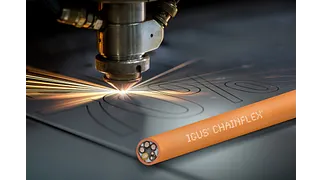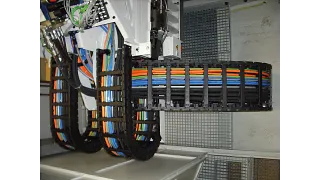Change Language :
Servo cable for energy chains

What are servo cables?
In electrical engineering, we refer to the connection cable for a servo drive as a servo cable. It connects the frequency converter to the motor. The fact that the frequency converter constitutes the energy supply for the motor means that we can adjust the speed by adjusting the shape of the voltage curve. This is normally done with pulse width modulation, which means spikes on the voltage curve.
The servo cable must therefore have a higher voltage class (600V/1000V) and an overall shield. Because servo motors have a temperature sensor and/or brake, the cable includes two more shielded pairs for these functions.
50% off surplus cable stock

In our online shop, discover surplus cable lengths at a 50% discounted rate!
These set lengths from the standard range maintain the same quality as the rest of our chainflex® cables and are backed by a 4-year guarantee.
Simply visit your desired cable within our shop and check for surplus lengths available at half price.
Servo cable options

Servo Cables for Interlinked Machine Tools
igus® servo cables are built for tight spaces and dynamic movements in interlinked machine tools.
From compact axes using CF270.UL.D to larger radii with CF897, and long travels with CF27.UL, each cable is tailored for performance and durability.
- UL-certified & oil-resistant jackets
- Designed for tight bend radii and high dynamics
- Up to 10 million double strokes with a 4-year guarantee
Let’s find the most cost-effective solution for your setup—contact us
Dual Shielding for Reliable Servo Cable Performance
chainflex® servo cables feature two types of shielding to ensure safe, interference-free operation in demanding industrial environments:
- Overall Shielding: Protects against external electromagnetic interference (EMI), ensuring stable EMC performance and preventing disruption to nearby machine components.
- Individual Pair Shielding: Specifically shields brake and temperature sensor pairs, preventing internal interference from power cores that could affect the frequency converter’s control signals.
For high-stress applications, our premium cables offer up to 90% mechanical coverage, using advanced materials and designs that combine robust EMC protection with fast, efficient processing during installation.
Contact us
Contact details

Opening hours
Office hours
Monday to Friday from 8 am - 8 pm.
Live chat:
24h







